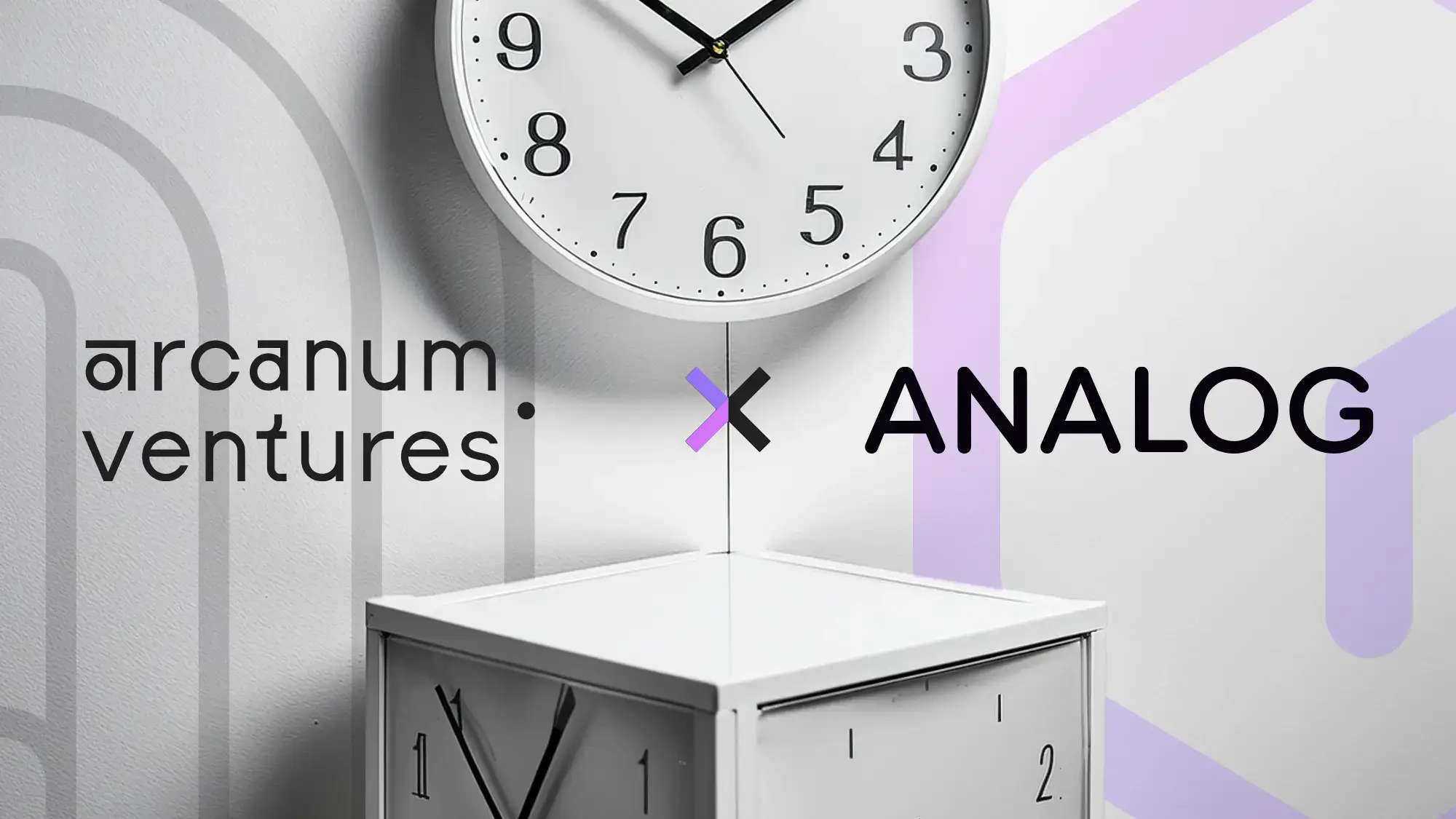Arcanum Ventures
Arcanum Ventures is a venture capital investment firm, blockchain advisory service, and digital asset educator. We bring precise knowledge and top-tier expertise in advising blockchain startups.
Arcanum demystifies the blockchain space for its partners by providing intelligent, poised, crystal clear, and authentic input powered by our passion to empower and champion our allies.
We unravel the mysteries and unlock the opportunities in blockchain, Web3, and other emerging innovations.
Tokenomics Design: Payment Barriers
The design of your token economy can be one of the most important factors in enabling the success of your cryptocurrency startup. Many founders believe token economics, or “tokenomics,” to be the metric and timelines that govern token distributions to all stakeholders. The reality is, tokenomics goes much deeper, referring to the study of the integration and interactions of a digital asset in an economy. Let’s break this down a bit more.
A tokenomics design project should consider the following:
Token Distribution
The segmentation of the token supply to internal and external stakeholders, oftentimes split up by business function that the intrinsic value of those tokens will support.
The specifics behind the distribution should be informed by market research, current investor sentiment, budgetary requirements of the startup, and financial strategy through the revenue generation phase.
Product Integration
The use case for the token is arguably the most important fundamental factor by which your web3 company will be evaluated. The integration of the digital asset into the ecosystem will help your audience understand how the token will support or hinder the use of your product or service.
Product-Market-Fit
Tied closely to product integration, the use-case of the token should make sense to your target market. “Cryptocurrency adoption” is the stadium chant of every evangelist in this space, but many fail to understand how this will be accomplished.
It’s best to understand your users and their familiarity with or acceptance of certain aspects of blockchain. This will help inform the design and utilization of the token in the ecosystem.
Ecosystem Interactions
The last major consideration will help internal stakeholders understand the limitations of the system. This involves the analysis of the different players in the ecosystem, their goals and desires, and predicting how they may interact with the token and product. This will inform estimates and projections on revenues, expenditures, and token supply effects tied to staking, burning, emissions, etc.
A Deep Dive Into Token Utilities
Arcanum Ventures’ tokenomics design process incorporates all of these considerations to deliver an economy aimed to accomplish the following goals:
- Create a strong value proposition for early financial backers
- Design an economy that supplements the product or service to gain early user traction
- Enable scalability and sustainability of a product or service that integrates a digital asset
- Allow flexibility in decision-making tied to supply effects that will mitigate the negative impact on user experience
In this new content series, we hope to provide insight into particular Token Utilities, along with how we’ve seen them used in tokenomics design, and how they may ultimately impact the economy. We will dive deep into the advantages and disadvantages of a particular token utility and relate this back to the target market for the product or service.
We’ll also provide a case history to analyze how this utility can be effective or ineffective in reaching the end goal of your business.
Token Utility – Payment Barriers
So we begin with a very fundamental use-case for cryptocurrency, enabling payment infrastructure. Arcanum Ventures has reviewed countless startup pitches, business models, and corresponding token economies. Sometimes, we see some innovative concepts, but more often, we see companies struggling to find a justification for using a native token.
Payment barriers are a prime example. This refers specifically to the payment of goods or services in an ecosystem that can ONLY be completed with the native token. There are some tangible benefits to creating a structure like this, but serious drawbacks to consider as well.
Many of the recommendations we provide here will be based on general, good business practices that will help improve the accessibility of your product or service, but some of them will be specific to product-market fit and target audience for your business.
Steelmanning the Argument: GameFi Case
Payment barriers make sense in specific ecosystems. For example, a game economy where in-game transactions are performed using a single currency that is gained through winning a battle, scouring a dungeon, or beating an opponent in a card game. When the utility of this currency is tied solely to interactions that can occur in the game, then it makes sense to create a closed-system economy.
The design of this economy will work to bolster user retention, making it more emotionally and financially difficult for players to leave the ecosystem. Keep in mind, in this game economy example, this utility directly conflicts with the core ethos of blockchain that has fueled the popularity of GameFi – true asset ownership and improved transactability.
To ensure success, the integration of this utility should go hand-in-hand with:
- High entertainment value of the game and ability to keep users engaged beyond simple earnings potential
- Strong incentive to re-invest earnings that will enhance gameplay experience
- Marketing strategy to garner early-user attention and avoid the “Play-to-Earn” narrative
Breaking Down The Argument: Food Delivery Case
When payment barriers go wrong. In the case of a business that offers a product or service to the general public, a payment solution is everything. Let’s take a decentralized food delivery platform as an example. This may be a platform that allows any pre-vetted driver to make food deliveries to be paid in cryptocurrency. On the other side, the platform allows users to order food from their favorite restaurants and pay quickly and cheaply with cryptocurrency.
There are two main considerations here for product-market fit. First and foremost is the “ease-of-use” perception for the target market. If the product is meant to allow easy access to food delivery and a more equitable revenue split for drivers, then we want to make a product that is as easy as possible to use.
If the target market doesn’t know how to use cryptocurrency, decentralized infrastructure, or fiat on-ramps, then simplifying the web3 components of the product will improve the user experience.
The second consideration is accessibility. If users already must overcome the first barrier of buying and using cryptocurrency, why add an additional barrier of buying a specific (native) token that can only be found on a specific decentralized or centralized exchange in order to use your platform? These barriers will compound to dissuade the use of your platform by everyday people.
Here we outlined just two specific examples of how a payment barrier can be beneficial to your company or harmful to your growth strategy. Below we offer a summary of the different advantages and disadvantages of incorporating a payment barrier into your cryptocurrency startup.
Advantages of Payments in Native Tokens
- Demand for Token: Requiring a native token for all ecosystem transactions will ultimately create more demand for the use of the token, which can increase its value.
- Allows incentivization: An economy built on a single asset can simplify programs to incentivize users through promotional rewards, discounts, etc.
- Transaction Control: Collecting revenues in the native token can allow more control over transaction fees, acceptable or preferential transaction types, and greater custody over who can interact in your ecosystem.
- Security and Speed: Pertaining solely to Layer 1 or Layer 2 networks where the structure can govern the affordability or speed of transactions.
Disadvantages of Payments in Native Tokens
- Revenue Diversity: Collecting revenues in the form of your own native asset requires you to later liquidate this asset to generate operating capital. This can create a circular economy within your business, along with investor concerns about liquidation strategies.
- Limited Acceptance: Technological barriers or added inconvenience of purchasing your native token to use your product or service may push away some platform users.
- Volatility: Your native token asset may not hold as much liquidity as major movers such as Bitcoin or Ethereum, making it a more volatile store of value and less sensical as a payment solution asset.
- Regulatory Risk: Regulations may eventually restrict the use of particular small-cap tokens for remittance, making it important to consider the corporate structure and jurisdiction of incorporation.
What’s the Verdict on Payment Barriers?
The classic response to any complex question also echoes here: “it depends.” The use of a native token as a payment barrier will depend on a number of factors in your product, service, or ecosystem.
Most importantly, the utility must make sense to your target market and what they are willing to accept. The utility should work to supplement the business and user experience or at the very least, not hinder the experience.
Additionally, the utility should work to promote the growth of your business through greater user acquisition, higher user retention, or easier financial management.
If this content interests you and you need help in designing your startup’s token economy, reach out to Arcanum Ventures and ask about how we can help. Our tokenomics advisory support has helped our clients create robust and scalable solutions.
Arcanum Ventures
Arcanum Ventures is a venture capital investment firm, blockchain advisory service, and digital asset educator. We bring precise knowledge and top-tier expertise in advising blockchain startups.
Arcanum demystifies the blockchain space for its partners by providing intelligent, poised, crystal clear, and authentic input powered by our passion to empower and champion our allies.
We unravel the mysteries and unlock the opportunities in blockchain, Web3, and other emerging innovations.
April 16, 2024
Transparency and accountability - two principles blockchain is rooted in, and two core tenets of Arcanum…
April 11, 2024
Arcanum Ventures is proud to announce our long-term support and incubation for Qualoo and its team. Their…
April 4, 2024
Arcanum Ventures is pleased to announce our latest strategic investment in Analog, a novel ‘Proof-of-Time’…



